
Before I visited Borago in Santiago, I had to admit my knowledge of Chilean food was limited. I knew the wines well—Cabernets and Carmeneres that had traveled the world—but the cuisine itself was a mystery. If asked, I might have mentioned Chilean sea bass. Yet that name is misleading. It is not bass at all, but Patagonian toothfish from the cold waters near Antarctica. Some reach Chilean shores, though many do not.
THE JOYS OF THE CHILEAN SEA BASS


This fish is coveted by many chefs because it is receptive to a wide variety of seasonings and preparations. It has a great, rich buttery flavor and it’s moist, firm, smooth and tender in texture, with large flakes. You can literally feel and taste its high omega 3 oil content – which is good for the health conscious – and it remains dewy even after cooking.
This fish is coveted by many chefs because it is receptive to a wide variety of seasonings and preparations. It has a great, rich buttery flavor and it’s moist, firm, smooth and tender in texture, with large flakes. You can literally feel and taste its high omega 3 oil content – which is good for the health conscious – and it remains dewy even after cooking.
La Esperanza Granada — an unforgettable wedding venue in Andalusia
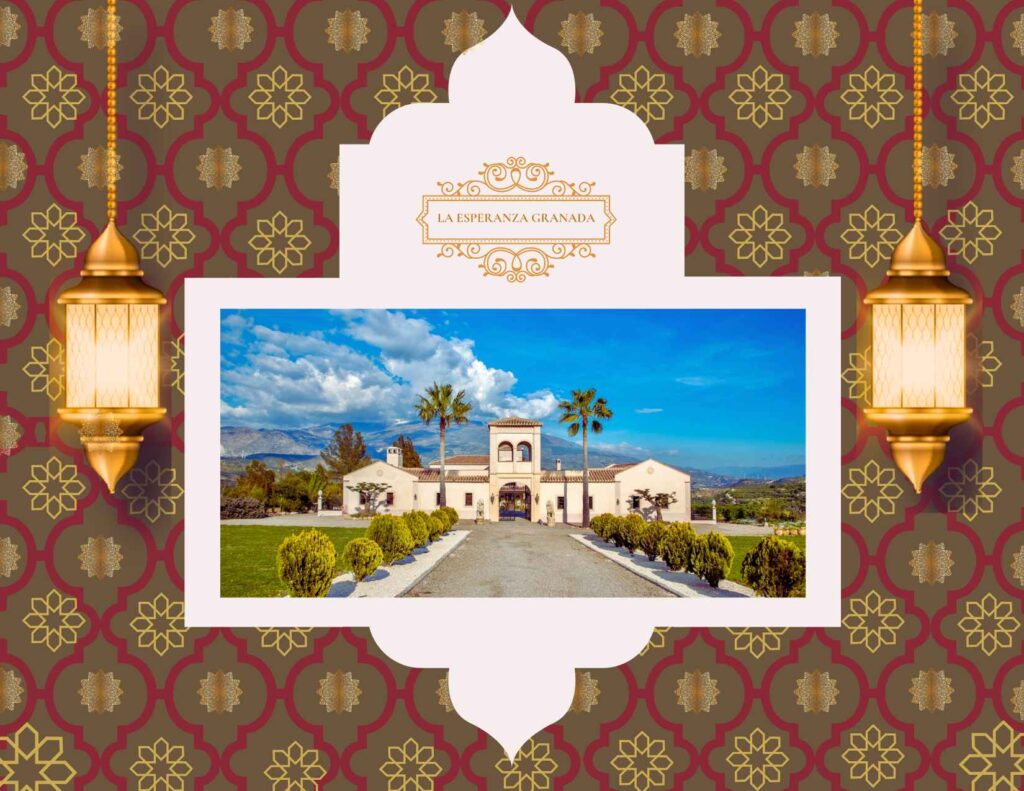
(Where vows are framed by mountains and centuries-old olive trees.)
Redefining Chilean Cuisine

Meanwhile, Chilean food sits in a category of its own. It lacks the romance of Argentina’s cuisine or the Japanese-influenced complexity of modern Peru. Argentina has its cult of meat, while Peru speaks fluently in Asian and Andean flavors. Brazil, too, thrives on a melting pot of cultural influences.
Chile, by contrast, has developed more slowly. For years, travelers did not return raving about its cuisine. It was not for lack of ingredients—the country offers remarkable bounty—but rather a tradition that had not yet found its creative expression. However, that picture is changing. Today, thanks to restaurants like Borago, Chilean gastronomy is in a transformational stage. Since Chile’s ascent to the international arena of gastronomy, local chefs have begun to explore and elevate native products in bold new ways.
Chef Rodolfo Guzmán and the Philosophy of Boragó

At the center of this transformation stands Boragó in Santiago, often described as the NOMA of Chile. More than a restaurant, it has become a symbol of the country’s new culinary identity. Its chef, Rodolfo Guzmán, trained at the legendary Mugaritz in San Sebastián, and today he is Chile’s most internationally recognized chef.
Boragó consistently ranks among the top restaurants in Latin America and on the list of the world’s best. It is also one of only two Chilean restaurants to earn this distinction. Yet its reputation is not built on accolades alone. Guzmán has dedicated himself to exploring Chile’s native bounty—wild herbs from the Andes, seaweeds from the Pacific, and fruits foraged in Patagonia.
Every dish reflects that mission. Meals recall ancient techniques, from cooking with hot stones to smoking with native woods. At Boragó, the experience goes beyond fine dining. It is an immersion into the landscapes, history, and traditions that make Chile unique.
From Patagonia to Easter Island: How Boragó Brings Chile to the Table
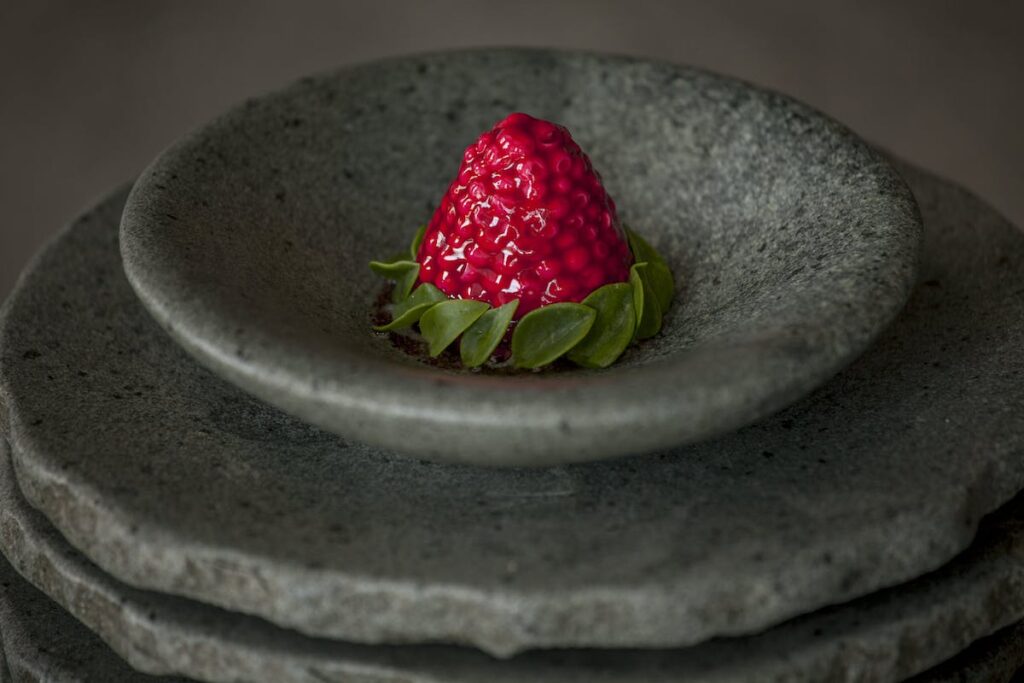
The chefs of Boragó travel endlessly across Chile, foraging for extraordinary ingredients. Some were completely new to me: rare mushrooms from remote forests, seafood from the icy Patagonian waters, and even occasional treasures from Easter Island. Each dish captures a different corner of Chile’s wild geography.
Chef Rodolfo Guzmán is a humble man, and meeting him was a highlight of my visit. He personally gave me a tour of his kitchen. Unlike so many great restaurant kitchens I have seen over the years, Boragó’s was strikingly quiet. There was no shouting, no tempers—only whispers, focus, and a shared sense of passion. Still, an unmistakable energy filled the room.
Like Noma, the chefs at Boragó serve the dishes themselves. Guzmán included. This makes every course personal, as each chef explains the techniques, ingredients, and inspiration behind the plate.
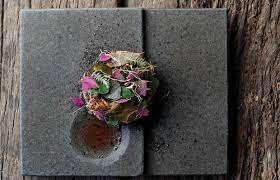
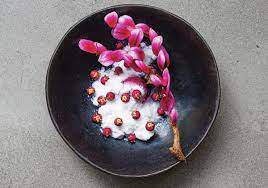
Boragó in Vitacura: A Sophisticated Start to the Night
Our group arrived promptly for our 8 PM reservation at Boragó. A hostess greeted us with quiet warmth and led us to a table in the center of the main dining room. The restaurant, set in Santiago’s upscale Vitacura district, was sleek and modern yet carried an air of relaxed elegance. Dark woods, soft lighting, and clean lines created a space that felt both sophisticated and approachable.
At first, the room was nearly empty. Dining in Santiago, as in much of Latin America, starts late. For a brief moment, it felt as if we had Boragó to ourselves. The silence was almost luxurious, broken only by the soft clink of glasses and the murmur of staff preparing for the evening ahead. Within half an hour, the mood shifted. Guests began to stream in, their anticipation almost palpable as they made a beeline for their tables. The restaurant came alive, yet without ever losing its poise.
The Endemic Menu at Boragó: Chile on a Plate
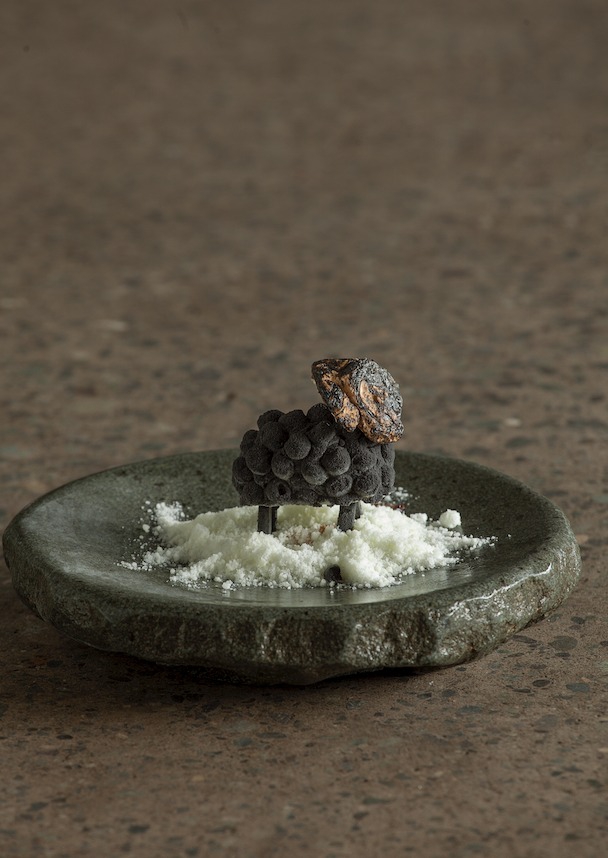
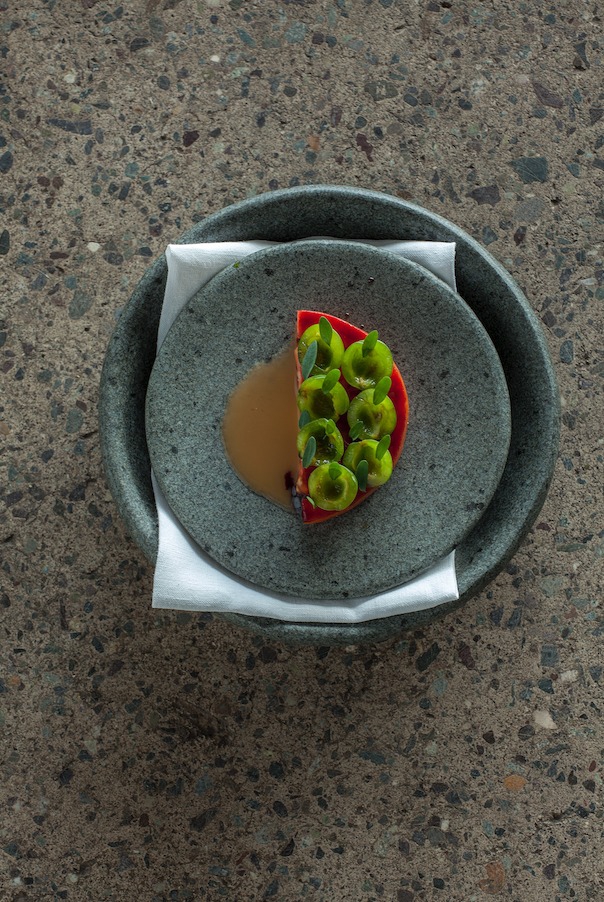
As for the eight-course Endemic tasting menu at Boragó, it was bold from the very beginning. The dishes captured the flavors, smells, and textures of the Chilean wilderness.
The evening began with five playful appetizers. We tasted crisp pork skins, a delicate melon jelly infused with golden liqueur, and warm bread paired with a mild “soil” pesto made from dehydrated herbs and squid ink. Each bite arrived in unexpected form—served on rocks, wooden blocks, or tin pails.
On our visit, the menu leaned into Chile’s landscapes. What looked like lumps of dirt turned out to be smoked fish. Black “volcanic rocks” were in fact squid ink dust. These details were more than whimsy; they echoed Chile’s fertile central valley and its many active volcanoes.
Juice Pairing at Boragó: Flavors from the Chilean Wilderness


The Endemic tasting menu at Boragó came with an optional wine pairing. I chose the more unusual juice pairing, a first for me and one of the restaurant’s signatures.
Each juice drew from Chile’s wilderness. Some were made with wild herbs foraged deep inside the country. Others came from evergreen shrubs, salt-marsh plants, or berries gathered high in the Andes. The combinations were unexpected yet remarkably balanced.
Served in elegant wine glasses, the juices looked every bit as refined as fine vintages. Their colors gleamed in the light, and their flavors often echoed the dishes on the plate. The sommelier guided the experience with quiet expertise, turning each glass into an additional layer of flavor and story.
Highlights from Our Boragó Tasting Menu
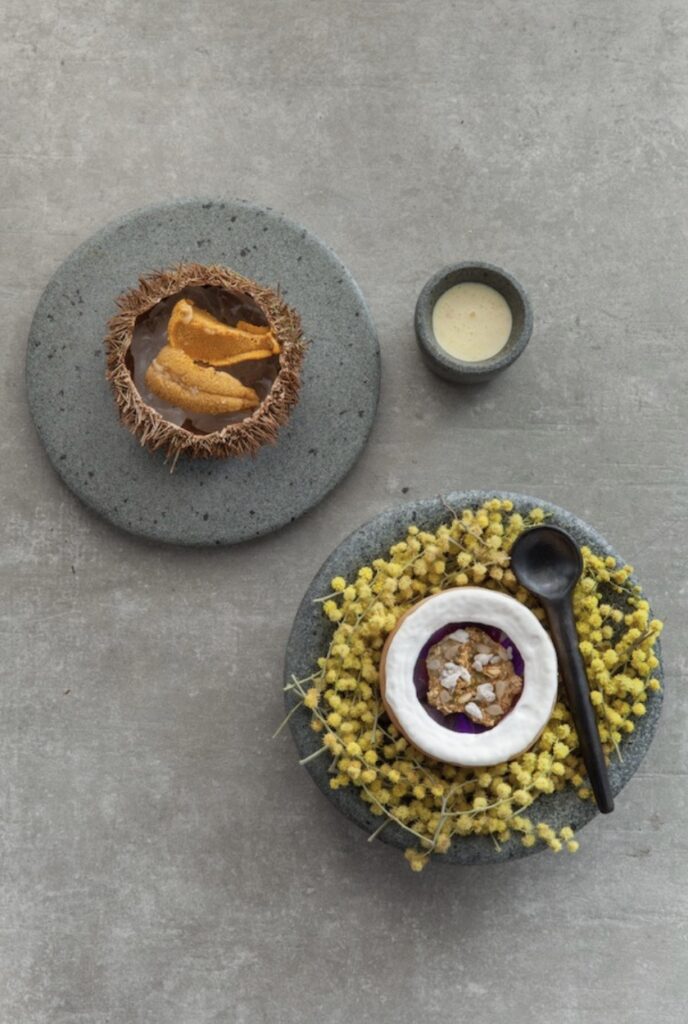

At Boragó, the menu changes almost daily, so there is little point in focusing on specific dishes. Still, a few from our evening deserve mention.
We began with a newly foraged variety of purslane, unusual in flavor and served on the edge of a rock plate straight from the grill, paired with yogurt. Another highlight was the cremoso de Isla Negra: a squid ink cracker dotted with goat cheese and balanced on fresh sea asparagus. It was as beautiful to look at as it was to taste.
Later came huevos a rescoldo—a slow-cooked egg covered in ash, from a rare breed of chicken that lays silky blue eggs richer than the usual. The kitchen also presented a veal dish, simmered in its own milk for 40 hours until meltingly tender.
However, the dish that stood out most was the congrio frito. A crisp fried fish fillet arrived coated in ash, with a shimmering seaweed dashi poured over it at the table. The result was an entrée both rustic and refined, and the most unforgettable bite of the night.

Inventive Desserts at Boragó: From Atacama to Frozen Glaciers
The medley of desserts at Boragó was as inventive as the courses before it. We began with the rica rica de Atacama: a cookie paired with rica rica–flavored ice cream, cracked to resemble the parched earth of the Atacama Desert. Despite its appearance, the texture was soft and chewy, delivering a delightful surprise. Rica rica itself is a strongly aromatic herb, long used as a local remedy for upset stomachs. Its flavor is bright, citrusy, and reminiscent of lemon verbena—an unexpected yet brilliant way to close the savory portion of the menu.
READ ABOUT NAGATACHO OHKA : THE BEST RESTAURANT IN TOKYO
The Joy of Frozen Desserts
The finale was nothing short of theatrical. Chef Rodolfo Guzmán appeared with a plate of mint meringues, aptly named frozen glaciers. Infused with liquid nitrogen, they were still smoking as they reached the table.
We were instructed to pop them into our mouths immediately—though I couldn’t resist sneaking a photo first. The result was hilarious and unforgettable: the meringues melted instantly, turning my breath icy and sending white smoke curling from my nostrils like a fire-breathing dragon.
The Boragó Experience in Santiago
Dining at Boragó is unique precisely because it offers flavors and ingredients that cannot be found anywhere else in the world. With its bold creativity and sophisticated use of Chilean products, Boragó reflects the spirit of a new Santiago—cosmopolitan yet rooted in its land. It is not just a restaurant, but the ultimate out-of-the-box dining experience in Chile, and one of the most compelling in all of Latin America.
Read more about the finest restaurants in the world in Travelife Magazine.
Photos courtesy of Borago Restaurant



